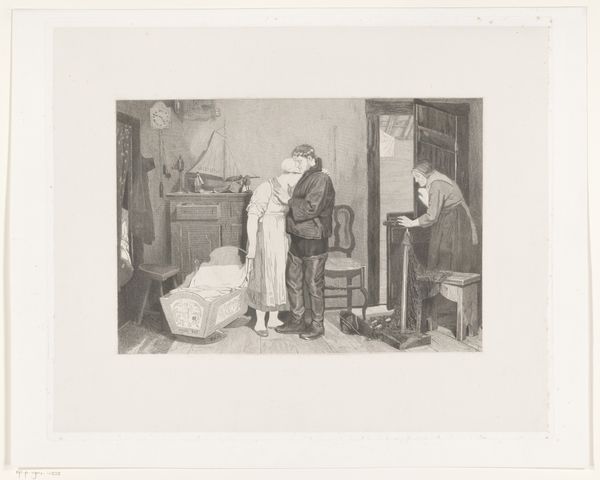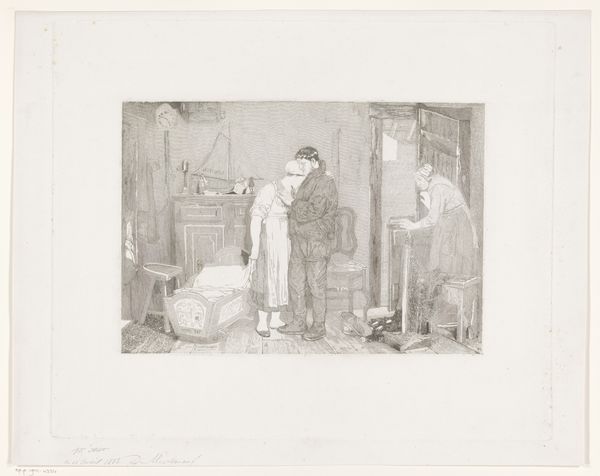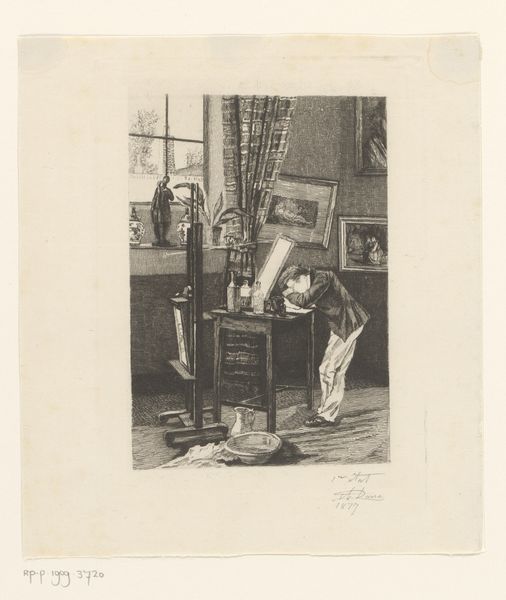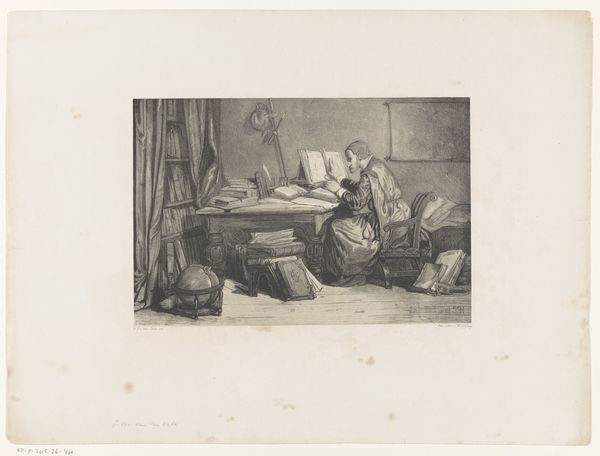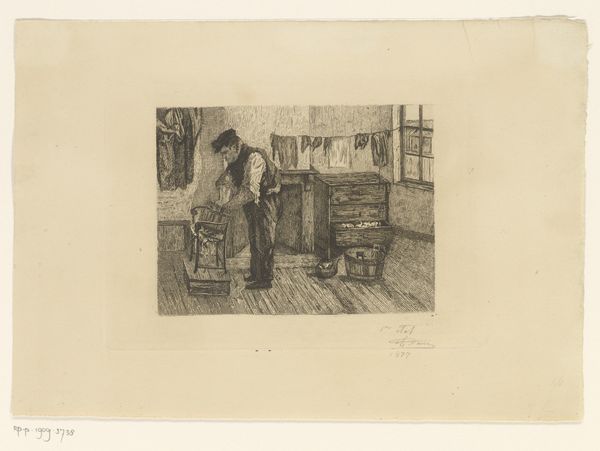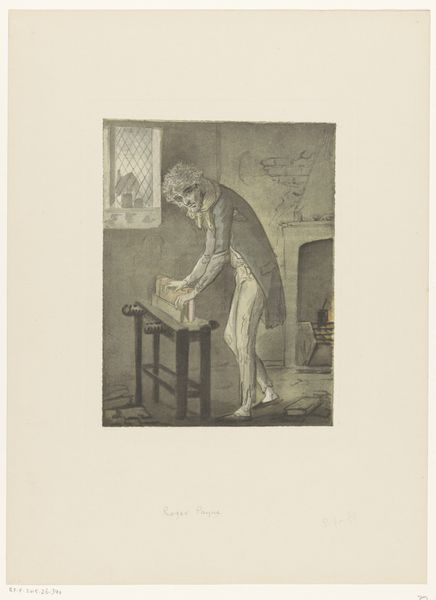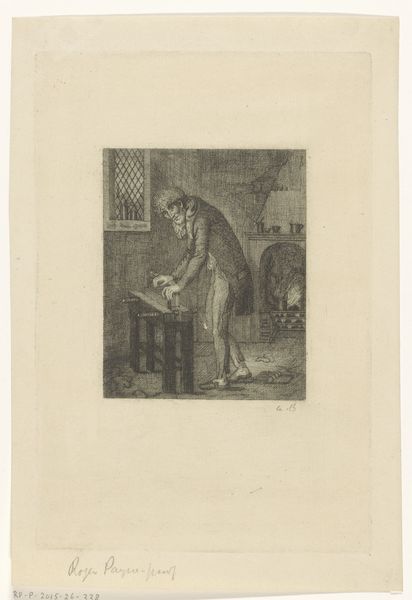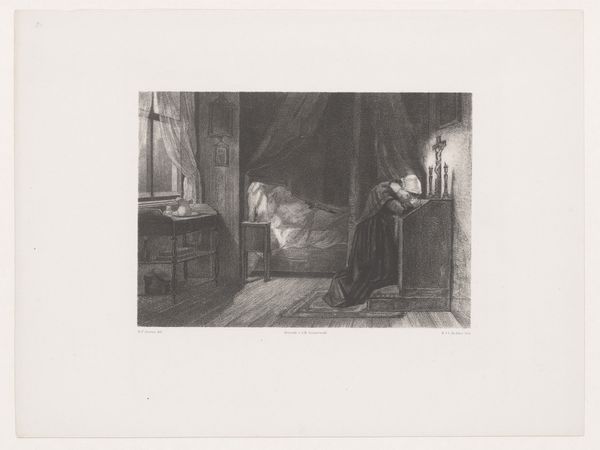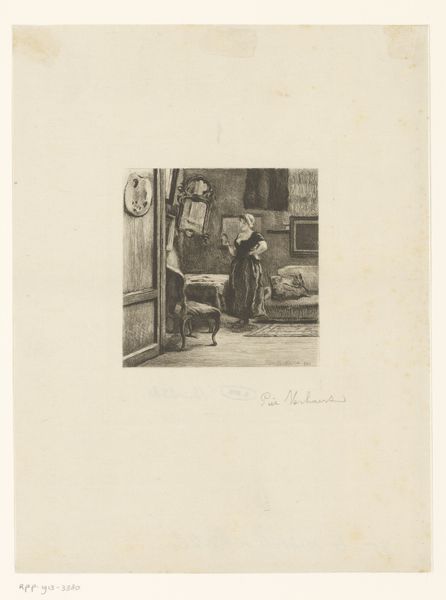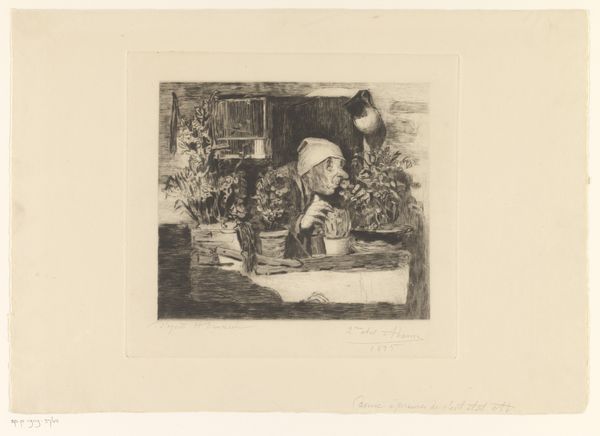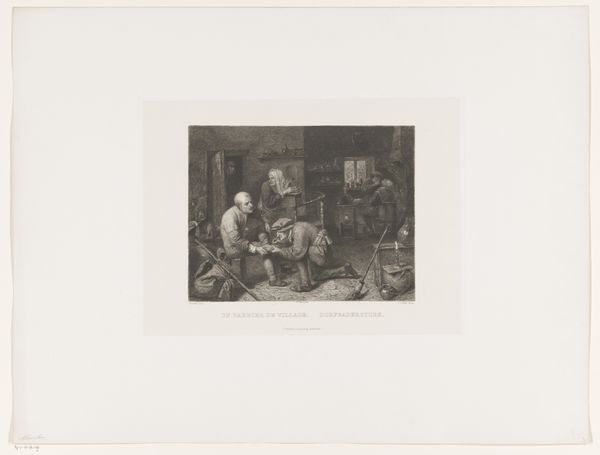
print, etching
#
portrait
#
print photography
#
narrative-art
# print
#
etching
#
genre-painting
#
realism
Dimensions: height 410 mm, width 493 mm
Copyright: Rijks Museum: Open Domain
Editor: This is "Vissersinterieur met treurend koppel bij een lege wieg," or "Fisherman's Interior with Mourning Couple by an Empty Cradle," an etching by François de Meersman from 1884. It's intensely sad, focusing on grief within a humble home. What catches your eye when you look at it? Curator: My gaze is drawn to the fishing net cast aside. Notice how it mirrors the despair of the mourning couple. The etching technique, rendered via a painstaking, manual, and time-intensive labor process, transforms this simple scene into something more… What does the cradle's emptiness signify within a fishing community’s reliance on the sea, with its attendant boom and bust? How does the reproductive labor lost shape and reshape familial and communal economies? Editor: That's a great point about the net mirroring their despair! So you’re saying the materials themselves and the process of making the art, plus the work lives depicted, gives extra meaning here? Curator: Precisely. The material conditions of production are critical here, as is their reflection within the narrative: an artisanal process depicting lives lived depending on precarity and human resilience, both within the home and beyond. The way Meersman employs etching creates a certain texture, highlighting the hardships endured by working families—it asks the viewer to reflect on the intersection of artistic labour, daily life and economic vulnerability. Editor: I never considered that the etching *itself* was a commentary on labor, beyond just showing the fishermen. I’m looking at the small details differently now, like the ship model on the shelf. It's almost a cruel reminder of the sea's promise. Curator: And who built that model, and for what purpose? These carefully reproduced etchings, once made widely available to bourgeois collectors, allowed urban buyers access to working-class imagery—let’s pause to consider this, and the value this assigned to artisanal practice! Editor: Right, like there's a whole layer of economic exchange *around* this scene of loss, and we become part of that by viewing it! Curator: Exactly. That's what focusing on materiality does – it allows us to examine not just the scene, but the means of its production and circulation as well. It adds layers of understanding. Editor: I’ll definitely keep that in mind. It’s much more complex than just a sad picture. Thanks!
Comments
No comments
Be the first to comment and join the conversation on the ultimate creative platform.
